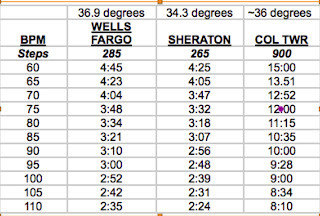One of the difficulties that we’re trying to get out in front of is scheduling our regional, national, and World Challenge events. We’re acutely aware that for you, booking leave is a complex process and you’d like to have as much advance notice as possible. Our last appearance of the three-year stint at Myrtle Beach will start a new process of three-year rotations. In other words, rather than returning year after year to the same place, we will start a three year rotation.
Theoretically, we’ll be able to say where we’re going to be up to 9 years in advance (3-venues, on a 3-year rotation). Right now, we’re hard at work for next year’s (2013) event and beyond!
Similarly, we want to organize our regional events in such a way that we can say predictably where we’ll be at a given time of the year. In case you just woke up from a coma, fuel prices have lurched to new highs and we have four vehicles that each suck down a gallon of diesel fuel every five minutes. Big trucks cost big bucks. Everything is a multiple of what you’re used to seeing in your POV. It takes 15 quarts of oil for the crankcase; and so on and so forth. Insurance for class 8 chassis are stratospheric numbers.
Zig-zagging back and forth across the country is a most inefficient way of running this circus. When we execute our new op-plan, we’ll make two circuits and head for the Nationals and World Championship. This plan is already coming together with an ability to nail down Regional events for next year (2013) and beyond. The downside is that we might not be able to accommodate your department’s 100th Year Anniversary if it comes up out of the regional rotation.
We’re thrilled to be at Myrtle Beach and have every intention of continuing our tradition in the future. We carefully examine all the survey data and have long ago accepted the fact that with over 3000 people in attendance at World Challenge, we simply cannot satisfy everyone’s choice.
But, we’ll be offering you some variety in the out years with the hope that no matter where we are, you’ll have a great, level playing field with bleachers stocked with cheering fans and web-casting of all the live action for everyone at home that couldn’t make it.
At this point of the season, be advised that getting out ahead of your airfare is the best way to contain costs. Prices rarely go down the closer you are to the event. You can save up to 50% of November’s cost by purchasing your tickets in late July or August.
We thank you for your loyalty and your feedback and look forward to seeing you on the tour this season.

.jpg)


